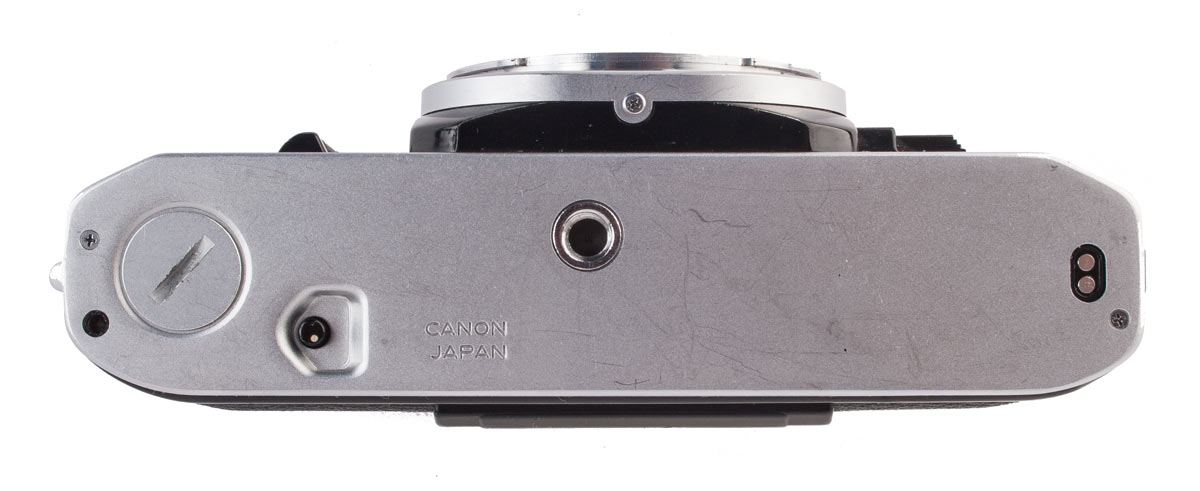Canon AT-1
The AE-1 without Auto Exposure
Dates: December 1976
Type: 35mm SLR
Lens Mount: Canon FD
Focus: Manual
Exposure: Manual match metering
Modes: Manual
Flash: Hotshoe / PC Socket Sync
Shutter: Electrically controlled cloth horizontal Focal Plane 2 sec. to 1/1000th
ASA / ISO: ISO 25 – 3200
Frame Rate: Manual Lever Winding
Battery: 4LR44/4SR44 (6v)
Notes:
Canon says on their Museum page for the AT-1 that, although the AE-1 was very successful, manual metering cameras were still the mainstream. Auto exposure models were still the top end cameras and were more expensive. The AT-1 was developed to offer the advantages of the AE-1 at a lower price to a wider audience.
The AT-1 was built on the same body as the AE-1 and as a result all of the accessories for the AE-1 fit the AT-1. In the viewfinder is a match needle metering display down the right side. The speed and aperture had to be set by hand. On the left hand side of the top deck was an on/off switch and battery check. The right side of the top deck is identical to the AE-1.
This camera was never released in the Japanese home market. It was an export model only.
In the Collection I have the following example:
Collection No.: C-19
Serial No.: 1599852
Condition: Excellent
Accessories: Very Good 620/650 case
Acquisition: 17 Dec 2015







